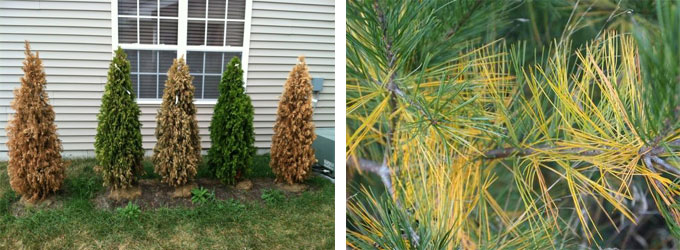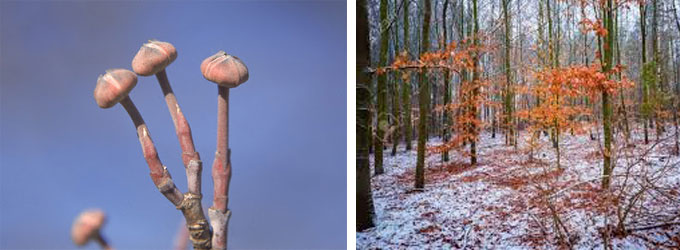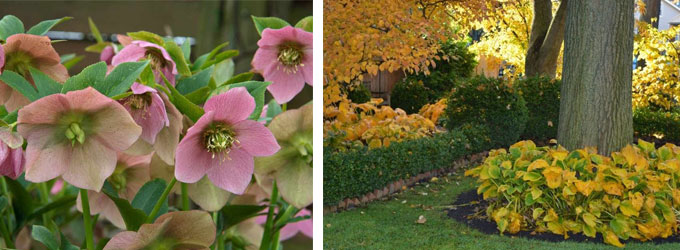As we wind down from summer and get ready for fall it’s important to remember that this is also a time of change for our plants. Deciduous shrubs and trees will show their fall color, evergreens may shed, and perennials will start to die back. For my clients who are new to gardening this can be a confusing time. It’s not unusual for me to hear from clients that one of their plants is dead, when in fact it is just entering dormancy. Read on to learn more.
Evergreens

The pictures above show two examples of evergreens with brown foliage. In the picture on the left the brown Arborvitae are clearly dying. The picture on the right however, shows normal needle shedding of a Pine in fall.
Deciduous trees

Both pictures above are examples of healthy deciduous trees in winter. In the picture on the left a Cornus florida – the native Dogwood – has lost it’s leaves and is budded up for spring bloom. The picture on the right shows the native Beech trees commonly found in our woods. While their leaves do turn brown they persist throughout the winter.
Perennials

New gardeners are often confused about the difference between perennials and annuals. When you add evergreen perennials to the mix things seem extra complicated! Both pictures above are healthy plants. The Helleborus orientalis on the left is an evergreen perennial, and the Hosta on the right is a cold hardy perennial in our area that goes completely dormant in the winter (after some nice fall color!).
The best way to know if a plant is entering dormancy in a healthy way, rather than dying, is to identify the plant correctly and know what is normal behavior for that species. Need help with this? Contact Bright Leaf Landscaping at (919) 619-4460 or fill out our online contact form. Design and installation are our expertise, and we are always happy to meet with new clients to discuss potential projects!
